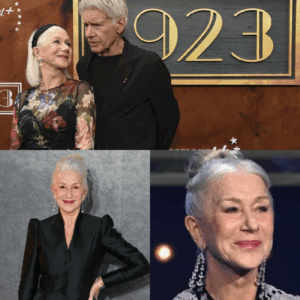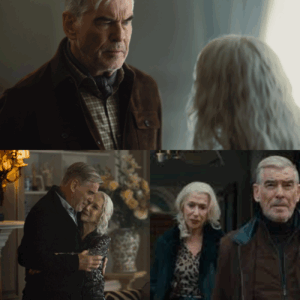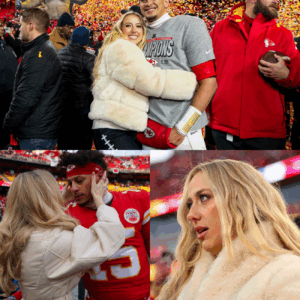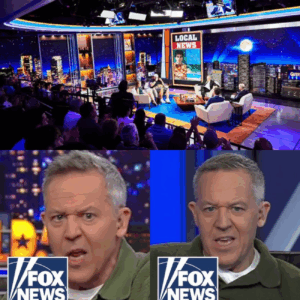2025 NBA mock draft: Projecting all 59 picks post-lottery
The Dallas Mavericks won the 2025 NBA draft lottery Monday, securing the No. 1 pick ahead of the two-day draft on June 25-26 in Brooklyn, New York.
In a shocking twist of fate, the Mavs converted on their 1.8% chance of winning the lottery, giving them the opportunity to select the consensus top player on draft boards for the 2025 class — Duke’s Cooper Flagg. The San Antonio Spurs, Philadelphia 76ers and Charlotte Hornets were also winners on Monday night, with their picks landing at Nos. 2, 3 and 4, respectively.
The Spurs had just a 6.3% chance at moving up to No. 2 from No. 8 and the 76ers a 10.6% chance at moving to No. 3 from No. 5; their respective jumps created additional chaos after Dallas’ surprise win. The Hornets dropped one spot from their slotted odds at No. 3 entering Monday’s lottery to No. 4 but still made out well after Utah, Washington and New Orleans all slid outside the top four.
Flagg, along with an expected 120 other players including Dylan Harper, Derik Queen and Walter Clayton Jr., is in Chicago this week for the NBA draft combine, G League Elite Camp and agency pro days. Our team of ESPN draft analysts will provide updates from Wintrust Arena as draft prospects participate in drills, measurements, athletic testing, medical examinations, team interviews and 5-on-5 scrimmages.
Jonathan Givony and Jeremy Woo share their first mock draft post-lottery, which reflects a thorough evaluation of the 2025 class and considers intel from scouts and front office personnel.
First round
![]()
1. Dallas Mavericks
Cooper Flagg, SF/PF, Duke
Freshman | TS%: 60.0
Scouting report: Flagg’s spot as the consensus No. 1 pick was well-earned over the course of a stellar freshman season that ranks among the best in the one-and-done era. He compares favorably with the best college wings of this era from a statistical perspective, bolstered by his consistency and ability to lead Duke’s young team.
Some NBA scouts project Flagg as a bona fide franchise player, while others wonder if he might be more of an elite second star. But that grand level of conjecture supports his case as the top player in this class. His rapid improvement, versatile two-way impact, unusual focus and competitive wiring at 18 years old make him a special prospect. — Woo
NBA intel and fit: Winning the lottery with just 1.8% odds is a seismic, improbable victory for the Mavericks, who will have an easy decision to make with the addition of Flagg. Dallas has been intent on maximizing its current window as Anthony Davis and Kyrie Irving approach their mid-30s, and Flagg’s readiness and versatility alongside them should immediately bolster the Mavericks’ lineup.
With Irving recovering from an ACL injury, Flagg might enter the league with significant shot-creation duties handling the ball, giving him a terrific opportunity to stretch himself as a playmaker and potentially blossom into an offensive star. This outcome significantly changes the fate of the Mavericks, who were staring down limbo after trading away superstar Luka Doncic and seemingly shortening their window to compete for titles. — Woo
1:46
Cooper Flagg reacts after Mavericks win NBA draft lottery
Potential No. 1 overall pick Cooper Flagg discusses his excitement for his NBA journey.
![]()
2. San Antonio Spurs
Dylan Harper, PG/SG, Rutgers
Freshman | TS%: 59.3
Scouting report: Harper did his best to keep the No. 1 pick conversation interesting for parts of the season with his skill level, shot creation and scoring prowess. He also can get to where he wants on the floor while demonstrating strong passing ability.
The physical nature of the NBA playoffs has emphasized why a sturdy playmaker of Harper’s type can be so valuable, with his ability to finish through contact and draw fouls a major part of his appeal, along with the way he fills up the box score with an excellent feel for the game. — Givony
NBA intel and fit: The Spurs were already in as enviable a position as any team in the lottery, with two picks in the top 14 to bolster a roster that already features back-to-back NBA Rookie of the Year winners in Victor Wembanyama and Stephon Castle, and now jump from 8 to 2 in the draft lottery in a massive stroke of good fortune.
While Harper’s fit alongside De’Aaron Fox and Castle looks far from seamless, it would be very surprising to see San Antonio’s forward-thinking front office pass on Harper here, who is widely considered the second-best prospect in the draft after Flagg. This opens up an opportunity for a team with a bigger need for a primary shot creator to make a move to trade up to this pick and perhaps convey to the Spurs added shooting, which their roster sorely needs to surround Wembanyama. — Givony
![]()
3. Philadelphia 76ers
Airious “Ace” Bailey , SG/SF, Rutgers
Freshman | TS%: 54.0
Scouting report: Bailey has been more polarizing for scouts than a typical top-five pick, displaying flashes of scoring upside at Rutgers while still at an early stage of his development in other key areas. Lottery teams are eager to get a feel for him in the predraft process, including interviews, to understand how far away he is from contributing positively on an NBA floor.
Wings with Bailey’s combination of size, physical skill and shooting prowess are rare. That coveted archetype has kept his stock largely steady despite his inconsistencies as a decision-maker, ball handler and defender. Some teams are concerned with the risk attached in those areas, but his scoring talent has tantalizing appeal for front offices in search of star power. — Woo
NBA intel and fit: The Sixers can not only breathe easy but celebrate after their pick jumped to No. 3, rather than falling out of the top six and conveying to Oklahoma City. A high-value draft selection gives the Sixers a true silver lining after a 24-58 season, as they try to balance winning around Joel Embiid and building for the future.
Bailey’s shotmaking chops and significant scoring upside would give Philly another strong building block for the long term, in addition to its rising backcourt of Tyrese Maxey and Jared McCain. — Woo
1:36
Best NBA fits for Dylan Harper and Ace Bailey
The New Orleans Pelicans have been looking for a big lead guard like Rutgers’ Dylan Harper while teammate Ace Bailey would have the best opportunity to flourish with the Brooklyn Nets.
![]()
4. Charlotte Hornets
VJ Edgecombe, SG, Baylor
Freshman | TS%: 56.1
Scouting report: The Big 12 Freshman of the Year, Edgecombe had a largely successful season showing off his physicality, intensity and rapid improvement as a ball handler, finisher and perimeter shooter. Edgecombe is the most explosive athlete in this class, has a real feel for the game and has had exceptional defensive moments, giving him significant upside to grow.
NBA teams have some questions about what position he best projects for, just how good a shot creator and overall scorer he is, and whether he was playing with the brakes on at times this season. — Givony
NBA intel and fit: While the Hornets were hoping to land atop the draft, staying in the top four while other teams like Utah and Washington fell is still a favorable outcome. Charlotte remains at an early stage of its rebuild, with LaMelo Ball coming off a career-best scoring season (25.2 points per game) and Brandon Miller emerging.
But the roster is still at a nascent stage overall, coming off a season in which both stars missed significant time because of injuries. Edgecombe’s defensive acumen and athletic slashing chops would slide in neatly alongside them, as he has the ability to play with Ball in the short term and perhaps inherit more significant shot-creation duties if the franchise decides to pivot away from Ball. — Woo
![]()
5. Utah Jazz
Jeremiah Fears, PG, Oklahoma
Freshman | TS%: 57.0
Scouting report: Fears, 18, had a spectacular freshman season, guiding Oklahoma to the NCAA tournament despite being one of the youngest players in college basketball. His combination of size, speed, pace, shotmaking and shot creation gives him significant long-term upside, as he can get anywhere on the floor to create for teammates while dishing on the move, finish skillfully in the lane or head to the free throw line.
Fears’ youth, thin frame and inconsistent finishing and decision-making will likely require patience from the team that drafts him, even if there is doubt around the significant star power he possesses, which will earn him looks much higher than this spot. — Givony
NBA intel and fit: Dropping out of the top four is highly disappointing for the Jazz, who will have a more complicated evaluation process after falling all the way to fifth. The Jazz are committed to a lengthy internal rebuild under CEO Danny Ainge but have yet to select a player with the type of homegrown star power that could kick-start them back toward winning.
They’ll aim to find that player at No. 5, rather than atop the draft, where Fears and his shot-creation chops might be appealing, even with other young guards on the roster. — Woo
![]()
6. Washington Wizards
Tre Johnson, SG, Texas
Freshman | TS%: 56.1
Scouting report: Johnson is one of the draft’s top scorers, capable of knocking down tough shots from all over the floor with a shoot-first mindset. He needs to round out several areas of his game — finishing in the paint, playmaking for teammates and defensive consistency — but NBA teams are drawn to his shooting, length and skill level. He has a good base skill set for a 2-guard, and if he can improve some of his tendencies over time, Johnson could be a strong building block for the future. — Woo
NBA intel and fit: The NBA’s youngest team, the Wizards have completely turned over their roster, front office and coaching staff over the past two years. And they still have plenty more room to grow, with several strong building blocks in place. Dropping four spots to the No. 6 pick can’t be viewed as anything but a massive disappointment for their fan base, which endured an 18-64 season a year after sporting the NBA’s worst record (15-67) and dropping to the No. 2 pick.
The Wizards will likely need to take a swing on the scoring talent of a player like Johnson here and then take another run at next year’s loaded lottery and hope that the basketball gods smile more favorably on them. — Givony
![]()
7. New Orleans Pelicans
Khaman Maluach, C, Duke
Freshman | TS%: 74.7
Scouting report: Maluach is the top defensive center prospect in this draft, offering an appealing mix of length, mobility, play finishing and paint protection at a young age. This year’s playoffs have served as a reminder for some teams that the ability to rotate size onto the floor still has plenty of value in the postseason, with more traditional centers such as Rudy Gobert and Steven Adams among those turning in big moments.
Maluach’s ability to deter opponents around the rim and strong intangibles should give him immediate rotation value with plenty of room to improve. — Woo
NBA intel and fit: Coming off a difficult, injury riddled-season that led to major changes in the front office, the Pelicans need star power to build around Zion Williamson, who played in just 130 games over the past four seasons because of injuries.
Unfortunately, that task became a lot harder when the Pelicans shockingly dropped four spots to the No. 7 pick, significantly complicating their outlook in this draft. It will be interesting to see if the Pelicans’ shift to a new front office hierarchy gives them a mandate from ownership to pivot toward a true rebuild, with an eye on a loaded 2026 draft class. — Givony
![]()
8. Brooklyn Nets
Kon Knueppel, SG/SF, Duke
Freshman | TS%: 64.8
Scouting report: Despite his modest athletic profile, Knueppel grew on NBA teams as the season moved on, producing consistently and authoring several impressive NCAA tournament performances that highlighted his value as a skilled, versatile wing who can do a bit of everything on both ends of the floor.
He made 41% of his 3s in a variety of ways but also demonstrated his ability to handle and pass out of pick-and-roll and hold his own defensively. NBA teams are eager to see his measurements and get a better gauge on how much his lack of explosiveness and quickness puts a ceiling on his upside, even if his outstanding feel for the game should be able to carry him far. — Givony
NBA intel and fit: The Nets pivoted in a new direction at last year’s draft with the Mikal Bridges trade and are now armed with four first-round picks to jump-start their rebuild in earnest, as well as significant salary cap space. It will be interesting to see which direction the Nets go in this offseason, as they have the flexibility to attempt to pivot toward winning quickly but could also opt for a longer rebuild with another top-heavy draft coming in 2026.
They might be disappointed to drop a few spots in the draft from No. 6 to No. 8, but they are still in the back end of a range where clear talent still exists, and have the pieces to potentially move back up the board if they decide to get aggressive. — Givony
![]()
9. Toronto Raptors
Collin Murray-Boyles, PF/C, South Carolina
Sophomore | TS%: 64.0
Scouting report: Murray-Boyles has been of interest to NBA teams for the past couple of seasons, with his statistical profile holding strong appeal in analytics models and the eye test backing much of that performance. Though undersized for his position, his toughness, play finishing, passing and defensive chops are attractive.
Teams will be particularly eager to see how Murray-Boyles shoots in workout settings, with the 3-point shot not yet a regular part of his arsenal but a key swing skill in his development. There is plug-and-play appeal in the things he already does well. — Woo
NBA intel and fit: Toronto has begun to shift out of its multiyear rebuild, as signaled by the acquisition of Brandon Ingram at the February trade deadline. Scottie Barnes remains the team’s primary cornerstone, and this pick gives the Raptors one more opportunity to swing on a top-10 talent before potentially upping the ante and pushing for a playoff berth moving forward.
Murray-Boyles would give them a true power forward who would enhance lineups defensively on a roster otherwise full of scorers. — Woo
![]()
10. Houston Rockets (via Phoenix)
Kasparas Jakucionis, PG, Illinois
Freshman | TS%: 59.8
Scouting report: Jakucionis helped himself quite a bit at Illinois, where he took on an enormous role as an 18-year-old debuting at the Division I level and put together a strong season. Despite predictable ups and downs as part of that adjustment, NBA teams remain largely optimistic that his toughness, playmaking feel, size and versatility at either guard spot will lead to a promising pro career.
There have been concerns about his ability to create separation off the dribble, but Jakucionis’ ball-screen savvy and room to grow as a shooter should enable him to make an impact as part of a team’s rotation, at the very least. — Woo
NBA intel and fit: The Rockets acquired swap rights to Phoenix’s pick in last summer’s deal with the Nets, and the Suns’ underwhelming play turned it into a valuable one. After a strong regular season ended in a first-round postseason exit, this pick represents an opportunity for Houston to bolster its deep roster, whether drafting a prospect or using this selection as a trade chip.
Jakucionis wouldn’t directly address a need but would give the Rockets significant backcourt depth to build with as they weigh the future of their roster, particularly if they decide to move on from Jalen Green and/or Fred VanVleet and transition toward Reed Sheppard and potentially the player they select here. — Woo
![]()
11. Portland Trail Blazers
Derik Queen, C, Maryland
Freshman | TS%: 60.0
Scouting report: Queen is perhaps the most skilled big man in this class. He is a terrific target in pick-and-roll, can create his own shot facing the basket with a wide array of moves, and has intriguing passing ability.
Queen’s conditioning, occasional apathy defensively and lack of shooting range are things NBA teams picking in this area (or earlier) will want to get a better handle on in the predraft process. Interviews, workouts and more research will determine whether he gets picked higher or lower, as there is no real consensus among scouts for how to view his unique profile long term. — Givony
NBA intel and fit: Portland’s rebuild is ahead of schedule, with the Blazers going 23-18 over their final 41 games as Deni Avdija, Toumani Camara and Donovan Clingan showed significant promise, providing a strong core to build around. All that unexpected winning diminished the Blazers’ lottery chances and has them staring at a third tier of prospects with plenty of talent but also obvious flaws.
Queen’s lack of shooting might not be an ideal fit on paper for a Portland team that already struggled from the perimeter, but his talent might be too big to pass on, especially if Clingan can make a jump with his shooting like he showed flashes of in small doses as a rookie. — Givony
![]()
12. Chicago Bulls
Egor Demin, PG/SG, BYU
Freshman | TS%: 51.3
Scouting report: Demin is a polarizing prospect, more theoretical in nature than some would hope in terms of the productivity, consistency and bankable skills he can hang his hat on early in his NBA career. He’s also exceptionally talented, a 6-foot-9 point guard who can make every pick-and-roll read and pass, often in highlight-reel fashion.
The evolution of his shooting will be a major swing skill for his development, but he made promising gains in a few different areas as the season moved on and clearly has significant upside to grow into at 19 years old. — Givony
NBA intel and fit: The Bulls continued to happily tread water this season, losing in the opening round of the play-in tournament after a 39-43 campaign a decade removed from their last playoff series win. Chicago will likely need to shake up its roster in a more serious way to have a viable chance of avoiding the play-in tournament in the near future, but the team has limited options for internal improvement, making this pick an important tool for the front office to utilize. — Givony
![]()
13. Atlanta Hawks (via Sacramento)
Jase Richardson, PG/SG, Michigan State
Freshman | TS%: 63.2
Scouting report: Richardson broke through as a surprise one-and-done at Michigan State, earning a major role and impressing with his poise and versatility in the backcourt. There has been some dissonance for evaluators between his strong analytic profile and the eye test, with terrific all-around productivity but average physical tools and some questions as to whether he can handle full-time point guard duties in the long run.
Richardson has plenty of fans among the league’s executives, but his range might be a little wider than that of some of the other players projected in this part of the draft. — Woo
NBA intel and fit: The Hawks made encouraging strides this season, with the additions of Dyson Daniels and Zaccharie Risacher injecting youth and depth into their starting five. Atlanta changed leadership in the offseason and is still searching for a president of basketball operations but should be looking to cultivate depth through the draft much the same.
Richardson’s feel and versatility at either guard spot would give the Hawks a useful connective option to mix in alongside their young roster. — Woo
![]()
14. San Antonio Spurs (via Atlanta)
Carter Bryant, SF/PF, Arizona
Freshman | TS%: 59.9
Scouting report: Bryant is the type of player who could help his standing in the predraft process as teams get a better look at him in workout settings, and he ticks several boxes NBA teams actively seek at his position. He’s an easy fit with his desirable combination of size, length, perimeter shooting, passing and defensive versatility, sliding all over the floor for the Wildcats this season and seeing time at both forward positions.
Bryant wasn’t consistently productive for Arizona coming off the bench and averaging just 6.5 points per game, as he’s not much of a shot creator and has room to grow on both ends of the floor. But he has significant upside to tap into long term. — Givony
NBA intel and fit: With its second lottery pick in this draft, it will be interesting to see what San Antonio’s appetite is for adding another rookie to an already young roster as the team likely hopes to gear up for a postseason run, nine years removed from its last playoff series win. Which direction the Spurs go with their first selection will likely play a role in what they do here, but the idea of moving one of these picks for more immediate help might appeal to the front office, depending on how the draft unfolds.
If the Spurs keep the pick, a young combo forward such as Bryant who can space the floor and guard multiple positions makes a lot of sense. — Givony
2:48
Shams: Spurs’ lottery jump could impact Giannis sweepstakes
Shams Charania breaks down the options for the San Antonio Spurs after they move up in the lottery to claim the second pick in the 2025 NBA draft.
![]()
15. Oklahoma City Thunder (via Miami)
Nolan Traore, PG, Saint-Quentin
France | TS%: 51.0
Scouting report: Traore started this year projected firmly in the top 10 but tumbled down the board amid an inefficient season struggling with turnovers, inconsistent defense and streaky shooting and finishing prowess. He has been on a major upswing lately, putting together some of his best performances as the season comes to a close, reminding teams of why he was so highly regarded with the way he gets to spots on the floor creating shots in volume for himself and teammates.
The 18-year-old has plenty to offer from a talent standpoint, showing flashes of brilliance with his ballhandling, passing and all-around creativity. His scoring ability and shotmaking prowess have been on display more vividly as of late with quite a few NBA teams in attendance. — Givony
NBA intel and fit: With three first-round picks, but 14 players expected to be under contract next season, it’s unclear how much room there is on Oklahoma City’s roster to add more rookies. Packaging picks to move up in the draft, trading some nonrotation players to other destinations or kicking the can down the road by swapping this year’s picks for future first-rounders could be options the front office considers.
The Thunder would have little use for a player such as Traore, but they have very few needs that this draft would help resolve anyway. The team will likely go for a best-talent-available approach if it ends up using all its picks. — Givony
0:47
Who’s the best international NBA draft prospect?
Jeremy Woo details why Nolan Traore from France is the highest-ranked international prospect on ESPN’s NBA draft board
![]()
16. Orlando Magic
Will Riley, SG/SF, Illinois
Freshman | TS%: 53.8
Scouting report: Though far from a finished product, Riley is viewed by NBA teams as a significant long-term talent. He is a versatile scorer with outstanding shotmaking skill from all over the floor who shows impressive flashes of ability to create shots for himself and others. He also has polished creativity as a passer, which is highly intriguing for a 19-year-old.
Adding strength and becoming a more consistent shooter and defender will be the next steps in his development, but he showed encouraging progress for Illinois as the season moved on. — Givony
NBA intel and fit: After back-to-back playoff appearances, Orlando’s front office seems intent on helping the team win its first playoff series since 2010, saying it plans to “look through a more win-now lens.”
That might signal a willingness to part with one or both of the team’s first-rounders (the Magic also hold the No. 25 pick) if “proven offensive help” becomes available, a search that will likely continue through the offseason. — Givony
![]()
17. Minnesota Timberwolves (via Detroit)
Danny Wolf, PF, Michigan
Junior | TS%: 56.6
Scouting report: Leaning into the versatility of an out-of-the-box prospect such as Wolf, who shouldered significant playmaking responsibilities for Michigan as a 7-footer, could be interesting. Wolf’s skill level, creativity and overall instincts on both ends of the floor give him a higher ceiling than your typical 21-year-old prospect, especially with the development trajectory he has been on the past three years. — Givony
NBA intel and fit: The Pistons breaking through and making the playoffs conveyed this pick to the Timberwolves, who have a nice opportunity to add talent after having traded away most of their draft capital since Tim Connelly took over as president. Wolf would give them a versatile frontcourt player capable of contributing sooner than later.
Minnesota will also consider using this pick to improve its roster as it pushes to contend around an ascending Anthony Edwards. — Woo
![]()
18. Washington Wizards (via Memphis)
Noa Essengue, PF, Ratiopharm Ulm
Germany | TS%: 61.1
2025 NBA Playoffs
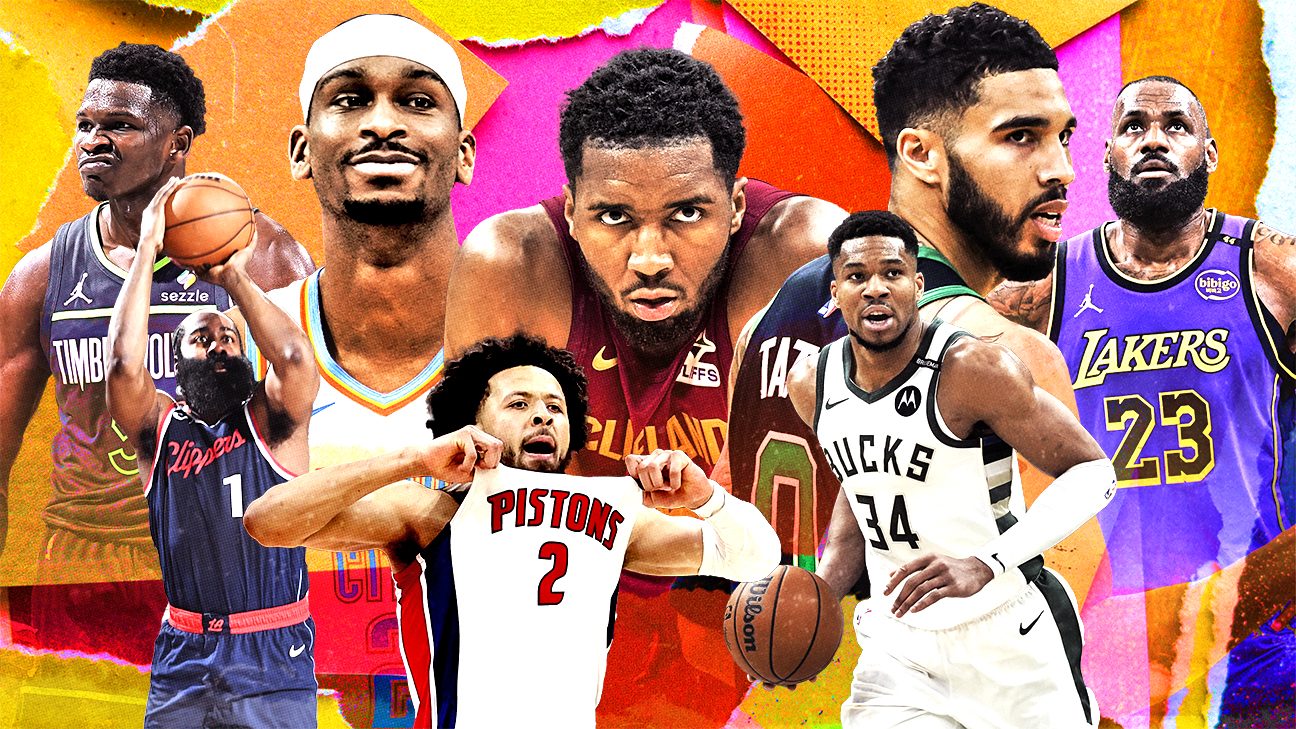 From the play-in tournament to the NBA Finals, ESPN has you covered throughout the postseason.
From the play-in tournament to the NBA Finals, ESPN has you covered throughout the postseason.
• What to know after first week of conf. semis
• Game-by-game analysis: Insiders on conf. semis
• Kram: How each team remaining wins the NBA title
• Paine: What a title would say for each playoff team
• Herring: First-round playoff MVPs
Scouting report: One of the youngest prospects in this class at 18, Essengue has put together a terrific season in Germany and given himself a chance to be the first international player drafted. His size and versatility at forward aligns well with where the modern NBA is trending. He shows strong feel producing off the ball but also is capable of making plays in a pinch.
He needs to add a good amount of strength to his frame, but Essengue has the potential two-way impact teams are often eager to develop. Shooting well in workouts could vault him into the lottery, which will be in play depending on how the board falls. — Givony
NBA intel and fit: With four picks in the top 40 and no real pressure yet to win just two years into a comprehensive roster teardown, the Wizards can go in a multitude of directions in this part of the draft, with all eyes first being on their selection at No. 18. — Givony
![]()
19. Brooklyn Nets (via Milwaukee)
Joan Beringer, C, Cedevita Olimpija
Adriatic | TS%: 61.5
Scouting report: Yet to turn 19, Beringer displayed major strides this season, with a late-blooming trajectory, excellent physical profile and intriguing long-term upside bolstering his stock. Though likely far away from being a plus contributor in the NBA, Beringer has plenty of developmental appeal as a defensive-oriented center with fluid mobility. He’s quite raw offensively and would strongly benefit from landing on a team that can afford him patience and developmental minutes. — Woo
NBA intel and fit: This is the second of Brooklyn’s four first-round picks, with the Nets likely to be very active in trade discussions as they look to extract value out of their strong position in this draft. But Beringer’s long-term upside as a mobile paint protector would make him a nice fit in Brooklyn, who can afford him the minutes and attention he needs to improve. — Woo
![]()
20. Miami Heat (via Golden State)
Liam McNeeley, SG/SF, UConn
Freshman | TS%: 53.6
Scouting report: McNeeley’s size, shotmaking prowess, feel for the game and toughness are critical attributes that NBA teams value at the wing position, but he will need to remind them of his winning qualities throughout the predraft process. He had a few big moments as a freshman at UConn but struggled to score efficiently, converting 44% of his 2-pointers and 32% of his 3-pointers while looking out of position defensively at times.
He will likely be asked to play a different role in the NBA, leaning more heavily into his ability as a dynamic perimeter shooter, which was more evident in other settings before college. Strong workouts will be important for McNeeley to remind teams of what made him so highly regarded entering the season, especially with his shooting, the foundation of his NBA appeal. — Givony
NBA intel and fit: Advancing out of the play-in tournament meant Miami lost its lottery-protected first-round pick (No. 15) to Oklahoma City — a remnant of the 2019 offseason trade to acquire Jimmy Butler III. Sending Butler to Golden State six years later secured this pick, an opportunity for the front office to again showcase its talent-evaluation skills after finding considerable success in the draft over the years.
Conveying their 2025 first-rounder and extinguishing their draft capital obligations to Oklahoma City (the pick was slated to be unprotected in 2026) frees the Heat to take any direction they want this offseason, perhaps with an eye on the talent-rich top of next year’s draft. — Givony
![]()
21. Utah Jazz (via Minnesota)
Asa Newell, PF/C, Georgia
Freshman | TS%: 62.0
NBA on ESPN/ABC
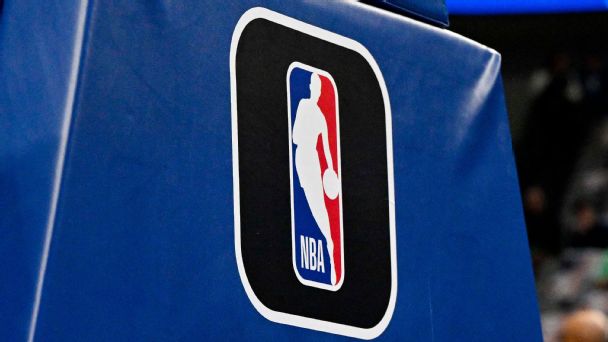 Scouting report: Newell’s productivity and pre-college résumé make him an interesting developmental bet. He offers size, motor and mobility but needs to sharpen his offensive skills and overall awareness to become a high-impact NBA player.
Scouting report: Newell’s productivity and pre-college résumé make him an interesting developmental bet. He offers size, motor and mobility but needs to sharpen his offensive skills and overall awareness to become a high-impact NBA player.
Teams will be intrigued to see how his perimeter skills measure up in workout settings, as he likely profiles best at power forward long term and will need to be able to knock down shots and put the ball on the floor confidently to make that transition. He was highly regarded out of high school and had a nice season at Georgia, profiling as more of a developmental pick for an NBA team that doesn’t need him to play major minutes right away. — Woo
NBA intel and fit: The Jazz own this second first-round pick by way of Minnesota in the Gobert trade. Though its lottery pick will be the biggest decision ahead, Utah found value with its later selections last season (Isaiah Collier and Kyle Filipowski) and could do so again at this spot. — Woo
![]()
22. Atlanta Hawks (via Los Angeles Lakers)
Thomas Sorber, C, Georgetown
Freshman | TS%: 58.7
Scouting report: Sorber isn’t expected to conduct much on-court activity during the predraft process as he recovers from foot surgery in February. Still, his strong feel for the game, defensive versatility, length, physicality and skill level as a pick-and-roll finisher are attractive qualities at 19 years old that should draw plenty of attention in this portion of the draft. — Givony
NBA intel and fit: The Hawks acquired the Lakers’ pick as part of the Dyson Daniels-Dejounte Murray trade, their second selection in the first round. With Clint Capela an unrestricted free agent, it makes sense for the Hawks to think about drafting a successor to back up Onyeka Okongwu at the center position. — Givony
![]()
23. Indiana Pacers
Nique Clifford, SG, Colorado State
Super Senior | TS%: 60.9
Scouting report: Clifford has built positive buzz this spring, receiving consideration from teams inside the top 20, with a chance to be a riser over the next few weeks. The dearth of experienced, reliable older college wings will help Clifford’s stock coming off a do-it-all season at Colorado State. As an above-average athlete who can play a variety of roles, he is tracking as a plug-and-play option for teams looking to address a need directly with their selection. — Woo
NBA intel and fit: Indiana has used the draft well to cultivate depth in recent years and is entering a win-now phase with Tyrese Haliburton elevating the franchise. Clifford’s readiness to contribute would be a boost for the Pacers’ bench, which presently lacks a bigger, more athletic wing defender in his mold. — Woo
![]()
24. Oklahoma City Thunder (via LA Clippers)
Hugo Gonzalez, SG/SF, Real Madrid
EuroLeague | TS%: 50.9
Scouting report: Gonzalez, 19, has had a difficult time gaining traction this season amid inconsistent playing time with Real Madrid, hitting 29% of his 3-pointers. When given the opportunity, Gonzalez has shown what makes him interesting with his defensive intensity, feel for the game and explosiveness.
He can guard multiple positions, and has shown glimpses of the passing prowess and winning qualities that made him a highly regarded prospect at a young age. — Givony
NBA intel and fit: It’s difficult to envision Oklahoma City using all three of its first-rounders with its current roster situation. Nevertheless, the Thunder have several months to determine a plan, and there will be no shortage of suitors if they decide to trade some of their picks. — Givony
![]()
25. Orlando Magic (via Denver)
Walter Clayton Jr., PG, Florida
Senior | TS%: 61.1
Scouting report: Clayton’s stellar NCAA tournament showing has vaulted him into the mix as a potential option in the 20s. He brings scoring prowess and the ability to hit tough shots, but also an element of streakiness that accompanies his style of play.
He projects as a potential microwave bench scorer, capable of putting up points quickly as a change-of-pace guard. His lack of size, defensive struggles and limited playmaking skills are drawbacks, but there are teams that might benefit from adding him to their bench mix next season. — Woo
NBA intel and fit: This is the Magic’s second first-round selection, acquired from Denver in 2021 in the Aaron Gordon trade. Orlando appears to be shifting into more of a win-now phase, making this pick a potential trade chip but also a spot to bolster depth. — Woo
1:19
Walter Clayton Jr. explains the last play against Houston and his draft stock
Walter Clayton Jr. joins “First Take” to discuss Florida winning the national championship and his NBA draft stock.
![]()
26. Brooklyn Nets (via New York)
Ben Saraf, PG/SG, Ratiopharm Ulm
Germany | TS%: 52.2
Scouting report: Saraf brings a potent combination of size, scoring instincts, feel for the game, aggressiveness and playmaking, showing supreme timing and creativity operating in the pick-and-roll. His sharp basketball instincts are evident in every aspect of the game.
His struggles with turnovers, scoring efficiency and porous defense against higher-level competition have caused some pause among talent evaluators about how his game might translate to the NBA ranks. — Givony
NBA intel and fit: The Nets have a void in the backcourt, depending on what they do with their first few picks, and this situation will be considered highly attractive to any of the guards slated to be picked in this range.
With five picks in the top 36, the Nets can go in many different directions on draft night. They might elect to be a conduit for trades as they are also projected to have more salary cap space this offseason than any NBA team. They could also take some swings on talent, picking a younger prospect in need of development, aided by minutes and opportunity to play through mistakes.
Brooklyn also holds the No. 36 pick, giving it flexibility to move around or out of the draft as value presents itself. — Givony
![]()
27. Brooklyn Nets (via Houston)
Rasheer Fleming, PF, Saint Joseph’s
Junior | TS%: 64.4
Scouting report: Fleming broke out as a junior by turning in an efficient, productive season, succeeding by dint of playing hard, scoring opportunistically and providing length and resistance defensively.
He is limited with the ball in his hands and won’t be called upon to create offense, but there’s value in his skill set that might make him an effective glue guy in the right context. His awareness and consistency need to improve over time, but he has yet to turn 21 and took a nice step forward this season, one that should earn him guaranteed money in the middle of the draft. — Woo
NBA intel and fit: Expect Brooklyn to look at trade opportunities, particularly with its pair of picks in the 20s, to try to extract value out of its league-high four first-round selections. — Woo
![]()
28. Boston Celtics
Noah Penda, SF/PF, Le Mans
France | TS%: 55.5
Scouting report: Penda is in the middle of an excellent season in France, as his versatility and strong feel for the game have played an essential role for playoff-bound Le Mans. He is an intelligent passer who slides all over the floor defensively and plays a mature style for a 20-year-old getting his first action in high-level European basketball.
His streaky shooting — he made 31% of his 3-pointers this season — is something NBA teams will want to learn more about in the predraft process, along with his average explosiveness. Still, players in his mold are en vogue, provided he can figure out his jumper long term. — Givony
NBA intel and fit: The Celtics were one of the few teams atop the NBA standings to hold on to their first-round pick, giving them a valuable asset to either add young, cost-controlled talent or explore trade opportunities.
Boston’s roster is already littered with players it drafted or developed off the scrap heap, and it will likely need to continue to be creative this summer with several key rotation members aging or approaching the end of their contracts. — Givony
![]()
29. Phoenix Suns (via Cleveland)
Yaxel Lendeborg, PF/C, UAB/Michigan
Senior | TS%: 61.3
Scouting report: Lendeborg became a person of interest for NBA teams after a terrific season at UAB, but is no lock to remain in the draft, with significant money on the table from Michigan should he return to college next season.
His two-way productivity, size and improving skill level holds some appeal as a depth option with developmental upside at power forward. Lendeborg will need to win teams over on the workout circuit to play his way firmly into the type of range it might take to keep him in this class versus next year’s. — Woo
NBA intel and fit: The Suns changed front office leadership this month, with Brian Gregory taking over as top executive for James Jones and the franchise more focused on its latest coaching hire than anything else right now. Adding a contributor who can shore up Phoenix’s questionable depth at this spot would be valuable. — Woo
2:08
UAB Blazers vs. Santa Clara Broncos: Game Highlights
UAB Blazers vs. Santa Clara Broncos: Game Highlights
![]()
30. LA Clippers (via Oklahoma City)
Adou Thiero, PF, Arkansas
Junior | TS%: 61.8
Scouting report: Thiero was injured at the end of the Razorbacks’ regular season and is one of the more interesting wild-card projects in this class, as an exceptional athlete who can make acrobatic plays defensively but who is otherwise raw in the skill and feel department.
The fact he plays extremely hard covers up for some of his shortcomings, and at this stage of the draft, he becomes an intriguing development pick if a team can help shore up his perimeter shooting. If Thiero can make enough shots to stay on the floor, he could be an above-average defender and useful role player long term. — Woo
NBA intel and fit: The Clippers remain in win-now mode with Kawhi Leonard and James Harden, and even after a third straight first-round exit, LA will be focused on maximizing this window. Whether that’s taking an upside swing on a player such as Thiero or targeting a more polished option, there should be value in adding an inexpensive young player to the Clippers’ bench. — Woo

0:17
Alex Condon flies in for a Florida putback jam
Alex Condon cleans up a miss with a putback dunk early for Florida.
Second round
31. Minnesota Timberwolves (via Utah)
Alex Condon, C, Florida, sophomore
32. Boston Celtics (via Washington)
Drake Powell, SG/SF, North Carolina, freshman
33. Charlotte Hornets
Ryan Kalkbrenner, C, Creighton, super senior
34. Charlotte Hornets (via New Orleans)
Maxime Raynaud, C, Stanford, senior
35. Philadelphia 76ers
Cedric Coward, SF, Washington State, senior
36. Brooklyn Nets
Labaron Philon, PG/SG, Alabama, freshman
37. Detroit Pistons (via Toronto)
Johni Broome, C, Auburn, super senior
38. San Antonio Spurs
Bogoljub Markovic, PF/C, Mega Superbet (Adriatic)
39. Toronto Raptors (via Portland)
Tahaad Pettiford, PG, Auburn, freshman
40. Washington Wizards (via Phoenix)
Alex Toohey, SF/PF, Sydney (Australia)
41. Golden State Warriors (via Miami)
Yanic Konan Niederhauser, C, Penn State, junior
42. Sacramento Kings (via Chicago)
Chaz Lanier, SG, Tennessee, super senior
43. Utah Jazz (via Dallas)
Milos Uzan, PG, Houston, junior
44. Oklahoma City Thunder (via Atlanta)
Boogie Fland, PG, Arkansas, freshman
45. Chicago Bulls (via Sacramento)
Darrion Williams, SF/PF, Texas Tech, junior
46. Orlando Magic
Kam Jones, PG/SG, Marquette, senior
47. Milwaukee Bucks (via Detroit)
John Tonje, SF, Wisconsin, super senior
48. Memphis Grizzlies (via Golden State)
Rocco Zikarsky, C, Brisbane (Australia)
49. Cleveland Cavaliers (via Milwaukee)
Michael Ruzic, PF/C, Joventut (ACB)
50. New York Knicks (via Memphis)
Eric Dixon, PF, Villanova, super senior
51. LA Clippers (via Minnesota)
Miles Byrd, SG, San Diego State, sophomore
52. Phoenix Suns (via Denver)
Tyrese Proctor, PG, Duke, junior
53. Utah Jazz (via LA Clippers)
Sion James, SF, Duke, super senior
54. Indiana Pacers
Koby Brea, SG/SF, Kentucky, super senior
55. Los Angeles Lakers
Dink Pate, SG/SF, Mexico City (G League)
56. Memphis Grizzlies (via Houston)
Javon Small, PG, West Virginia, senior
57. Orlando Magic (via Boston)
Vladislav Goldin, C, Michigan, super senior
58. Cleveland Cavaliers
Mouhamed Faye, C, Reggio Emilia (Italy)
59. Houston Rockets (via Oklahoma City)
Hansen Yang, C, Qingdao (China)
Giannis trade tiers: What every NBA team can — and can’t — offer the Bucks
Brian Windhorst breaks down why the NBA draft lottery will determine what the future holds for Cooper Flagg and Giannis Antetokounmpo. (1:40)
For the first time in his career, Antetokounmpo is open-minded about exploring whether his best long-term fit is remaining with the Milwaukee Bucks or going elsewhere, league sources confirmed to ESPN’s Shams Charania on Monday.
Antetokounmpo is under contract for the next three seasons, with 2027-28 as a player option. The 30-year-old two-time MVP will be eligible to sign a four-year, $293.4 million extension in the 2026 offseason — with the Bucks or with a potential new team.
What happens next is a waiting game — in Milwaukee and around the league. And with just hours until a highly anticipated draft lottery (7 p.m. ET, ESPN), this saga could take another twist after the pingpong balls decide which franchises will get the opportunity to select top prospects such as Cooper Flagg, Dylan Harper and Ace Bailey.
Antetokounmpo will meet with the Bucks in the next month, and the other 29 teams will internally line up trade scenarios if the 2021 Finals MVP is made available. (The last time an NBA team traded a former MVP in his prime was in January 2021, when the Houston Rockets sent James Harden to the Brooklyn Nets.)
An important reminder for teams chasing Giannis this summer: Any franchise without salary cap space would have to send Milwaukee at least $43.5 million in salary and remain below the first apron.
Which franchises have the draft capital, the contracts and the young stars to swing a deal with Milwaukee? To set the stage, we have broken up the league’s 30 teams into nine tiers, starting with the Bucks.
Note: Player salaries are reflective of the 2025-26 season.
 The Milwaukee Bucks
The Milwaukee Bucks
The Bucks have been on the clock to put a championship roster around Antetokounmpo. This offseason is no different.
Since general manager Jon Horst was promoted in June 2017, Milwaukee has made 25 trades that have cost the team seven first-round picks, three years of pick swaps and 18 second-rounders. (The only players remaining from the 2021 championship team are Antetokounmpo and Lopez.) But those trades have played a role in why the Bucks trail only the Boston Celtics as the winningest regular-season team since 2016-17. Improving the top-heavy roster could be even more difficult this summer.
The challenge comes with an inability to trade multiple first-round picks. Currently, the Bucks can move either their 2031 or 2032 pick. Antetokounmpo, Damian Lillard and Kyle Kuzma will earn a combined $130 million of the Bucks’ $164 million payroll next season. Lillard will turn 35 in July and is owed $113 million over the next two seasons after recovering from a torn Achilles. Lopez, Bobby Portis, Taurean Prince, Kevin Porter Jr. and Gary Trent Jr. all could become free agents this summer. (Portis and Porter each have a player option.)
One positive: Milwaukee is no longer in financial purgatory. The Kuzma-Khris Middleton swap with the Washington Wizards at the trade deadline has given the Bucks freedom to add in free agency or via trade while not being pressed against the salary cap’s second apron. The Bucks will have the $14.1 million non-tax midlevel exception available.
Checking four boxes: Draft picks, players, contracts and a win-now roster
Shams Charania: Giannis is open-minded about leaving the Bucks
Shams Charania reports that for the first time in Giannis Antetokounmpo’s career, he is open-minded about departing Milwaukee.
We won’t list Houston and San Antonio as the favorites just yet, considering Antetokounmpo has not asked to be traded and there is no list of preferred destinations.
However, in the case he does, Houston and San Antonio fit all the requirements; draft assets, young players, sizable contracts and a win-now roster even after trading for Antetokounmpo.
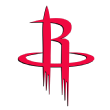 Houston Rockets
Houston Rockets
Houston is walking a financial tightrope when it comes to a potential Antetokounmpo deal. While the Rockets have $131 million in salary, they are a luxury tax and first apron team when taking into account Fred VanVleet’s team option, non-guaranteed contracts (Jock Landale, Aaron Holiday) and the first-round pick from Phoenix. (VanVleet cannot be traded unless the team option is exercised).
The Rockets are in the rare position of being a playoff team with a top-10 pick in June’s draft. Besides the pick owed by Phoenix, Houston has nine future first-rounders — including five that can be traded over the next seven years. The Rockets can also swap firsts with Brooklyn in 2027 and have a 2027 unprotected first-round pick from Phoenix and two of the more favorable first-rounders among Dallas, Phoenix and their own in 2029. Houston owes Oklahoma City its 2026 first-rounder if it falls outside of the top 4. Houston has seven second-round picks available.
Free agents: Fred VanVleet (team option), Aaron Holiday (team), Steven Adams, Jae’Sean Tate, Jeff Green
Rookie scale contracts: Jabari Smith Jr. ($12.3 million, RFA 2026), Reed Sheppard ($10.6 million, RFA 2028), Amen Thompson ($9.7 million, RFA 2027), Tari Eason ($5.7 million, RFA 2026) and Cam Whitmore ($3.5 million, RFA 2027)
Sizable contracts: Fred VanVleet ($44.9 million, Team 2026), Alperen Sengun ($33.9 million, Player 2029), Jalen Green ($33.3 million, Player 2027), Dillon Brooks ($22.1 million, UFA 2027)
Other contracts: Jock Landale ($8 million, UFA 2027), Aaron Holiday ($4.9 million, Team 2026) and Nate Williams ($2.3 million, Team 2027). Note: The Landale and Williams contracts are non-guaranteed. Holiday is not trade eligible unless the team option is exercised.
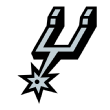 San Antonio Spurs
San Antonio Spurs
Year 3 of Victor Wembanyama’s first-round rookie contract has put San Antonio in a position to take back salary and not face financial restrictions. Including both its first-round picks in June, San Antonio is $33 million below the tax and $37 million below the first apron.
The Spurs still have equity in draft picks despite trading four first-round picks to acquire De’Aaron Fox at the deadline. They have two lottery picks in June and an additional three future tradable firsts. San Antonio has the Hawks’ unprotected first in 2027 and two of its own starting in 2029. The Spurs also have the right to swap first-round picks with Atlanta in 2026, with Boston (top-1 protected) in 2028, with Dallas or Minnesota (if 2-30) in 2030, and with Sacramento in 2031. The Timberwolves, meanwhile, will send their 2031 unprotected first to San Antonio.
Free agents: Chris Paul, Charles Bassey, Jordan McLaughlin, Sandro Mamukelashvili, Bismack Biyombo
Off the board: Victor Wembanyama
Rookie scale contracts: Stephon Castle ($9.6 million, RFA 2028), Jeremy Sochan ($7.1 million, RFA 2026), Blake Wesley ($4.7 million, RFA 2027), Malaki Branham ($4.9 million, RFA 2026)
Sizable contracts: De’Aaron Fox ($37.1 million, UFA 2026), Devin Vassell ($27 million, UFA 2029), Keldon Johnson ($17.5 million, UFA 2027) and Harrison Barnes ($19 million, UFA 2026)
Other contracts: Julian Champagnie ($3 million, Team 2026)

The pick packages
The Nets and Jazz have a combined 22 first-round picks available in an Antetokounmpo trade. The problem comes down to whether Brooklyn and Utah still have the assets and players to build around the superstar big man.
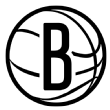 Brooklyn Nets
Brooklyn Nets
The Nets are in the driver’s seat this summer because of their cap flexibility. Including the free agent holds of Cam Thomas, Day’Ron Sharpe and the team’s four first-round picks, Brooklyn projects to have $45 million in cap space.
Brooklyn has 15 future first-round picks, including 13 that are tradable. The Knicks owe Brooklyn three future firsts (2027, 2029, 2031) and swap rights in 2028 (or Phoenix). If the 76ers retain their first-round pick this season, they will send Brooklyn a top-8-protected first in 2028. The pick is top-8 protected in 2027 if the first in 2025 is sent to Oklahoma City. In addition, the Nets have the less favorable 2029 first of Dallas, Phoenix and Houston. The Rockets also have the right to swap firsts in 2027. The Nets also have 15 second-round picks available to trade.
Free agents: D’Angelo Russell, De’Anthony Melton, Trendon Watford, Ziaire Williams, Cam Thomas, Day’Ron Sharpe, Tyrese Martin (Team), Drew Timme (Team), Keon Johnson (Team), Jalen Wilson (Team)
Rookie scale contracts: Noah Clowney ($3.4 million, RFA 2027), Dariq Whitehead ($3.2 million, RFA 2027)
Sizable contracts: Nic Claxton ($25.4 million, UFA 2028), Cameron Johnson ($21.1 million, UFA 2027)
Other contracts: Maxwell Lewis (2.2 million, Team 2026), Johnson ($2.3 million, Team 2025), Wilson ($2.2 million, Team 2025), Martin ($2.2 million, Team 2025), Timme ($2 million, Team 2025)
 Utah Jazz
Utah Jazz
With two first-round picks in June and 15 players under contract, expect Utah to act like a team over the cap this summer. Including both firsts and $15 million in non-guaranteed contracts (a total of $15 million), it is right at the salary cap.
The Jazz own 13 first-round picks, including a combined five unprotected first-rounders (two in 2027 and 2029) from Cleveland and Minnesota (the Wolves will also send a top-5-protected first in 2029.) They have eight tradable firsts, including two in this year’s draft. The Suns will also send Utah an unprotected 2031 first. The Jazz have a top-5-protected 2027 first from the Lakers and can swap a first with Minnesota or Cleveland in 2026 (if in the top eight) and with Cleveland in 2028. The Jazz owe Oklahoma City a top-8-protected first in 2026. Utah has nine second-round picks available to trade.
Free agents: John Collins (Player)
Rookie scale contracts: Taylor Hendricks ($6.1 million, RFA 2027), Cody Williams ($5.7 million, RFA 2028), Walker Kessler ($4.9 million, RFA 2026), Keyonte George ($4.3 million, RFA 2027), Brice Sensabaugh ($2.7 million, RFA 2027), Isaiah Collier ($2.7 million, RFA 2028)
Sizable contracts: Lauri Markkanen ($46.4 million, UFA 2029), Collins ($26.6 million, Player 2025), Collin Sexton ($19.2 million, UFA 2026), Jordan Clarkson ($14.3 million, UFA 2026), KJ Martin ($8 million, UFA 2026). Note: Collins cannot be traded unless he opts in to this contract, while Martin’s contract is non-guaranteed.
Other contracts: Svi Mykhailiuk ($3.7 million, UFA 2028), Kyle Filipowski ($6.1 million, Team 2027), Johnny Juzang ($2.8 million, UFA 2028), Jaden Springer ($2.4 million, UFA 2027). Note: The Mykhailiuk, Juzang and Springer contracts are non-guaranteed next season.

The wild cards
1:35
Stephen A.: Why should Giannis stay in Milwaukee?
Stephen A. Smith says he isn’t surprised by Giannis Antetokounmpo’s decision and believes the Bucks aren’t going anywhere as a team.
There is uncertainty as it relates to these next six teams.
While the Thunder check the four boxes to acquire a superstar such as Antetokounmpo, future finances could be a deterrent. Oklahoma City could commit nearly $800 million in extensions this offseason to Shai Gilgeous-Alexander, Jalen Williams and Chet Holmgren.
For the 76ers, fortunes could change if they grab a top-2 spot in this year’s draft. However, because of the size of Antetokounmpo’s salary, acquiring Joel Embiid or Paul George is a likely nonstarter in Milwaukee.
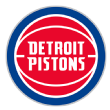 Detroit Pistons
Detroit Pistons
The financial windfall of Cade Cunningham likely being named to All-NBA impacts the Pistons’ spending this offseason. Because Cunningham’s salary will get adjusted from $38.6 million to $46.4 million next season, Detroit projects to enter the offseason with $19 million in cap space but could elect to act as a team over the cap if it brings back free agents Tim Hardaway Jr. and Dennis Schroder. In that scenario, Detroit would have the $14.1 million non-tax midlevel exception and $5.1 million biannual exception available. The Pistons have all their first-round picks in the next seven seasons, are allowed to trade four and can swap in each season.
Free agents: Tim Hardaway Jr., Malik Beasley, Dennis Schroder, Lindy Waters III, Paul Reed
Rookie scale contracts: Jaden Ivey ($10.1 million, RFA 2026), Ausar Thompson ($8.8 million, RFA 2027), Ron Holland II ($8.7 million, RFA 2028), Jalen Duren ($6.5 million, RFA 2026), Marcus Sasser ($2.9 million, RFA 2027
Sizable contracts: Cunningham ($46.4 million, UFA 2030), Tobias Harris ($26.6 million, UFA 2026), Isaiah Stewart ($15 million, Team 2027), Simone Fontecchio ($8.3 million, UFA 2026)
Other contracts: Bobi Klintman ($2 million, Team 2027)
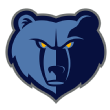 Memphis Grizzlies
Memphis Grizzlies
The trade sending Marcus Smart to Washington has given Memphis options this offseason. Including Santi Aldama’s free agent hold, the Grizzlies have $147 million in salary and are $7 million below the salary cap. They could use the available room to renegotiate the Jaren Jackson Jr. contract in 2025-26 and then extend for an additional four seasons.
The Grizzlies have their own first round in the next seven years. They also have the more favorable swap of their own and least favorable swap of Orlando and Phoenix in 2026. In 2030, the Grizzlies have the right to swap their own first with the less favorable between Phoenix and Washington. Memphis has seven second-rounders available.
Free agents: Marvin Bagley III, Luke Kennard, Santi Aldama, Lamar Stevens
Rookie scale contracts: Zach Edey ($6 million, RFA 2028)
Sizable contracts: Ja Morant ($39.5 million, UFA 2028), Desmond Bane ($36.7 million, UFA 2029), Jackson ($23.4 million, UFA 2026), Brandon Clarke ($12.5 million, UFA 2027), John Konchar ($6.2 million, UFA 2027)
Other contracts: Vince Williams Jr. ($2.3 million, Team 2026), Scotty Pippen Jr. ($2.3 million, Team 2027), Jay Huff ($2.3 million, Team 2027), GG Jackson ($2.2 million, Team 2026), Jaylen Wells ($2 million, Team 2027)
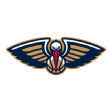 New Orleans Pelicans
New Orleans Pelicans
The Pelicans are a wild-card team because they control the Bucks’ first-round pick in the next two seasons. Including their lottery pick and 12 players under contract, they are $2.5 million below the tax and $8.4 million under the first apron. And besides having their own first-round pick in the next seven years — four can be traded — New Orleans has the right to swap with Milwaukee in 2026.
The least favorable of their own first and Milwaukee’s in 2027 will go to Atlanta, but New Orleans will retain it if the pick falls in the top five. They also have a 2026 top-4-protected first-rounder from Indiana. In total, the Pelicans have six tradable first-rounders, including their lottery pick in June, with four second-rounders available.
Free agents: Elfrid Payton (Team), Brandon Boston (Team), Bruce Brown, Jeremiah Robinson-Earl
Rookie scale contracts: Jordan Hawkins ($4.7 million, Team 2026), Yves Missi ($3.4 million, RFA 2028)
Sizable contracts: Zion Williamson ($39.5 million, UFA 2028), Dejounte Murray ($30.8 million, Player 2027), CJ McCollum ($30.7 million, UFA 2026), Trey Murphy III ($25 million, UFA 2029), Herbert Jones ($13.9 million, UFA 2027), Kelly Olynyk ($13.4 million, UFA 2026), Jose Alvarado ($4.5 million, Player 2026). Note: Williamson’s contract is partially guaranteed.
Other contracts: Karlo Matkovic ($2 million, Team 2026), Antonio Reeves ($2 million, Team 2026), Payton ($3.2 million, Team 2025), Boston ($2.3 million, Team 2025). Note: The Reaves contract is non-guaranteed. Payton and Boston cannot be traded unless their team option is exercised.
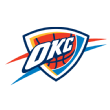 Oklahoma City Thunder
Oklahoma City Thunder
The Thunder have a one-year reprieve before extensions for Williams and Holmgren begin in 2026 and Gilgeous-Alexander the following year. For now, Oklahoma City has 15 players under contract entering the offseason and once again is projected below the luxury tax; not including its draft picks, the team is $10.1 million below. OKC has its first-round picks in the next seven years and the possibility of an additional six first-rounders. Including both firsts in June, Oklahoma City can trade 13 of them.
In 2026, the Thunder have a top-8-protected first from Utah and top-6-protected first from Philadelphia. OKC can also swap first-rounders with the Clippers and Rockets (if 11-30). The least favorable of their own, Rockets (if 5-30) and Clippers will go to Philadelphia in 2026. The 76ers first is a top-4-protected first in 2027 if not conveyed in 2025 or 2026, and the Thunder can also swap first-rounders with the Clippers in 2027 and Mavericks in 2028. Oklahoma City will receive a top-5-protected first from Denver in 2027, 2028 or 2029. If the first is conveyed in 2027, Oklahoma City will receive a 2029 top-5-protected first from the Nuggets. The pick is top-5 protected in 2030 if not conveyed in 2027. The Thunder have 18 second-round picks available to use in a trade.
Free agents: Ajay Mitchell (Team), Jaylin Williams (Team)
Off the board: Shai Gilgeous-Alexander ($38.3 million, UFA 2027)
Rookie scale contracts: Chet Holmgren ($13.7 million, RFA 2026), Ousmane Dieng ($6.7 million, RFA 2026), Jalen Williams ($6.6 million, RFA 2026), Cason Wallace ($5.8 million, RFA 2027), Nikola Topic ($5.2 million, RFA 2028), Dillon Jones ($2.8 million, RFA 2028)
Sizable contracts: Isaiah Hartenstein ($28.5 million, Team 2026), Alex Caruso ($18.1 million, UFA 2029), Lu Dort ($17.7 million, Team 2026), Isaiah Joe ($12.4 million, Team 2027), Aaron Wiggins ($9.7 million, Team 2028), Kenrich Williams ($7.2 million, Team 2026)
Other contracts: Jaylin Williams ($2.2 million, Team 2025), Mitchell ($3 million, Team 2025). Note: Williams and Mitchell cannot be traded unless the team option is exercised.
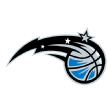 Orlando Magic
Orlando Magic
The cost to keep this roster intact is set to get expensive. With Year 1 Franz Wagner’s and Jalen Suggs’ extensions set to begin, the Magic are not only over the luxury tax by $19 million but are $11 million above the first apron and $1 million below the second. The projection includes both first-round picks in June’s draft.
The Magic have six tradable first-rounders in the next eight years. They have the more favorable 2026 first-round swap of their own and less favorable Phoenix or Washington (if 1-8). Orlando has 15 second-rounders available.
Free agents: Moritz Wagner (Team), Gary Harris (Team), Cory Joseph (Team), Caleb Houstan (Team)
Rookie scale contracts: Paolo Banchero ($15.3 million, RFA 2026), Anthony Black ($7.9 million, RFA 2027), Jett Howard ($5.5 million, RFA 2027), Tristan da Silva ($3.8 million, RFA 2028)
Sizable contracts: Franz Wagner ($38.7 million, UFA 2030), Suggs ($35 million, UFA 2030), Kentavious Caldwell-Pope ($22.6 million, Player 2026), Jonathan Isaac ($15 million, UFA 2029), Cole Anthony ($13.1 million, Team 2026), Wendell Carter Jr. ($10.9 million, Team 2028), Goga Bitadze ($8.3 million, UFA 2027), Moritz Wagner ($11 million, Team 2025), Harris ($7.5 million, Team 2025). Note: Moritz Wagner and Harris cannot be traded unless their team options are exercised.
Other contracts: Joseph ($3.5 million, Team 2025), Houstan ($2.2 million, Team 2026). Note: Joseph and Houstan cannot be traded unless their team options are exercised.
 Philadelphia 76ers
Philadelphia 76ers
The draft lottery and the player options of Andre Drummond, Kelly Oubre Jr. and Eric Gordon play a role in what flexibility Philadelphia has this summer. If the team retains its first-rounder and all three players opt in before June 29, it is $3.7 million below the luxury tax and $11.1 million below the first apron.
The 76ers have an additional three first-rounders available to use in a trade. Philadelphia is allowed to trade its own first-rounder in 2025, 2030 and 2032 and has an unprotected first-rounder from the Clippers in 2028. Philly can also swap first-rounders (top-4 protected) with the Clippers in 2029. It has eight seconds available to use in trades.
Free agents: Kelly Oubre Jr. (Player), Andre Drummond (Player), Eric Gordon (Player), Jared Butler (Team), Lonnie Walker IV (Team), Justin Edwards (Team), Kyle Lowry, Guerschon Yabusele, Quentin Grimes
Rookie scale contracts: Jared McCain ($4.2 million, RFA 2028)
Sizable contracts: Joel Embiid ($55.2 million, Player 2028), Paul George ($51.7 million, Player 2027), Tyrese Maxey ($37.9 million, UFA 2029)
Other contracts: Adem Bona ($2 million, Team 2027), Ricky Council IV ($2.2 million, Team 2026). Note: Council’s contract is non-guaranteed.

Accelerating the rebuild but at a cost
There is a common theme for the four teams listed below.
All four finished in the lottery, and while each has the draft equity and young players to chase Antetokounmpo, none have a roster that can contend for a playoff spot.
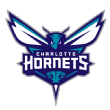 Charlotte Hornets
Charlotte Hornets
Charlotte is right at the $154.6 million salary cap this offseason but have the draft assets to appease Milwaukee if Antetokounmpo becomes available. Including a top-three pick in June, Charlotte owns all their first-rounders through 2032 and three additional firsts from prior trades. In 2026, they have the less favorable first of Phoenix, Washington (if 1-8), Orlando and Memphis. Charlotte will receive a 2027 top-14-protected first and unprotected in 2028 if not conveyed in the prior year. The Hornets will also receive a 2027 top-2-protected first from the Mavericks. Charlotte is allowed to trade up to seven first-round picks and has 11 future second-round picks.
Free agents: Seth Curry, Taj Gibson and Wendell Moore Jr.
Rookie scale contracts: Brandon Miller ($11.9 million, RFA 2027), Tidjane Salaun ($7.9 million, RFA 2028), Mark Williams ($6.3 million, RFA 2026), Nick Smith ($2.7 million, RFA 2026)
Sizable contracts: LaMelo Ball ($37.9 million, UFA 2029), Miles Bridges ($25 million, UFA 2027), Jusuf Nurkic ($19.4 million, UFA 2026), Grant Williams ($13.7 million, UFA 2027), Josh Green ($13.7 million, UFA 2027)
Other contracts: Josh Okogie ($7.8 million, UFA 2026), DaQuan Jeffries ($2.7 million, UFA 2027) and Moussa Diabate ($2.3 million, UFA 2027). Note: All three contracts are nor or partially protected.
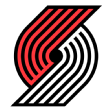 Portland Trail Blazers
Portland Trail Blazers
With 13 players under contract for next offseason, Portland is over the salary cap but well below the luxury tax to add during free agency or via trade. With their upcoming lottery pick, the Blazers are $11 million below the tax and $17 million below the first apron.
The Blazers owe Chicago a top-14-protected first-round pick, with the protection extending to 2028. They have the most and least favorable first of their own, Boston and Milwaukee in 2029 and have the right to swap first-rounders with Milwaukee in 2028 and 2030. The swap rights in 2028 are extinguished if the Blazers send Chicago their first that year.
Including this season (they can trade their first-rounder the night of the draft), Portland has four first-round picks and six second-rounders available to trade.
Free agents: Jabari Walker, Matisse Thybulle (Player), Rayan Rupert (Team), Dalano Banton
Rookie scale contracts: Scoot Henderson ($10.7 million, UFA 2027), Shaedon Sharpe ($10.7 million, RFA 2027), Donovan Clingan ($7.2 million, RFA 2028), Kris Murray ($3.1 million, RFA 2027)
Sizable contracts: Deandre Ayton ($35.6 million, UFA 2026), Jerami Grant ($32 million, Player 2027), Anfernee Simons ($27.7 million, UFA 2026), Deni Avdija ($14.4 million, UFA 2028), Robert Williams ($13.3 million, UFA 2026), Thybulle ($11.5 million, Player 2025). Note: Thybulle cannot be traded unless his option is exercised.
Other contracts: Duop Reath ($2.2 million, RFA 2026) and Toumani Camara ($2.2 million, Team 2026). Notes: Both contracts are non-guaranteed.
 Toronto Raptors
Toronto Raptors
Toronto enters the offseason with limited flexibility outside of their first-round pick. Including a likely top-10 selection, Toronto is over the tax and $1.3 million over the first apron. The Raptors have their own first-round pick in every draft through 2032 and are allowed to trade up to five first-round picks, including their lottery pick in June. Toronto has seven future second-round picks available.
Free agents: Chris Boucher and Garrett Temple
Rookie scale contracts: Ochai Agbaji ($6.4 million, RFA 2026), Gradey Dick ($5 million, RFA 2026), Ja’Kobe Walter ($3.6 million, RFA 2028)
Sizable contracts: Scottie Barnes ($38.7 million, UFA 2030), Brandon Ingram ($38.1 million, UFA 2028), Immanuel Quickley ($32.5 million, UFA 2028), RJ Barrett ($27.7 million, UFA 2027), Jakob Poeltl ($19.5 million, Player 2026)
Other contracts: Jonathan Mogbo ($1.9 million, Team 2026), Jamal Shead ($1.5 million, Team 2026), AJ Lawson ($2.3 million, UFA 2026), Colin Castleton ($2.2 million, UFA 2026), Jamison Battle ($2 million, UFA 2027). Note: Lawson, Castleton and Battle’s contracts are non-guaranteed.
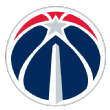 Washington Wizards
Washington Wizards
Washington is $14 million below the tax and has the flexibility of $20 million in non-guaranteed contracts. The Wizards have 25 draft picks through 2032, including 10 first-rounders. Two of which — their own and Memphis’ — are in this year’s draft.
Washington also has the least favorable 2026 first-rounder between Oklahoma City, Houston (if 5-30) and LA Clippers and the second-most favorable 2029 first-rounder between Boston, Milwaukee and Portland. The Warriors will send a top-20-protected first to Washington in 2030. Washington has the right to swap first-rounders with Phoenix in 2026, 2028 and 2030 but owe New York a first-round pick that is top-8 protected in 2026.
Free agents: Khris Middleton (Player) and Malcolm Brogdon
Rookie scale contracts: Alex Sarr ($11.8 million, RFA 2028), Bilal Coulibaly ($7.3 million, RFA 2027), Carlton Carrington ($4.7 million, RFA 2028), AJ Johnson ($3.1 million, RFA 2028), Kyshawn George ($3 million, RFA 2028)
Sizable contracts: Middleton ($33.3 million, Team 2025), Jordan Poole ($31.8 million, UFA 2027), Marcus Smart ($21.6 million, UFA 2026), Corey Kispert ($14 million, UFA 2029), Richaun Holmes ($13.3 million, UFA 2026), Saddiq Bey ($6.2 million, UFA 2027). Note: Holmes’ contract is non-guaranteed, while Middleton cannot be traded. unless he opts-in to his contract.
Other contracts: Anthony Gill ($2.5 million, UFA 2026), Justin Champagnie ($2.3 million, UFA 2028), Colby Jones ($2.2 million, Team 2026)

Need a third team to make a Giannis deal
Each of the four teams listed below have at a minimum three tradable firsts.
That is the good news. The bad? Any contracts included in a trade likely don’t match Milwaukee’s timeline. (For example, Golden State would need to reroute Draymond Green to a third team and gain additional draft assets to make a Giannis deal work.)
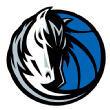 Dallas Mavericks
Dallas Mavericks
For a second straight season, expect the Mavericks to hover around the tax line and first apron threshold. Including Kyrie Irving’s $43 million player option and the Mavs’ 2025 first-round pick, Dallas is $8 million over the luxury tax and $4 million over the first apron. They are not allowed to use more than 100% of the traded player exception if they remain above the first apron.
The Mavericks have three tradable first-rounders and two seconds. Including their lottery pick in June, Dallas can trade the Lakers’ 2029 unprotected first and their own in 2031. The Mavs also have the ability to swap firsts in 2026, 2031 and 2032 with one second-rounder available.
Free agents: Kyrie Irving (Player), Dwight Powell (Player), Dante Exum, Spencer Dinwiddie
Rookie scale contracts: Dereck Lively II ($5.3 million, RFA 2027), Oliver-Max Prosper ($3 million, RFA 2027)
Sizable contracts: Anthony Davis ($54.1 million), Irving ($43 million, Player 2025), Klay Thompson ($16.7 million, UFA 2027), PJ Washington ($14.2 million, UFA 2026), Daniel Gafford ($14.7 million, UFA 2026), Caleb Martin ($9.6 million, Player 2027), Naji Marshall ($9 million, UFA 2027), Max Christie ($7.7 million, Player 2027), Jaden Hardy ($6 million, Team 2027), Powell ($4 million, Player 2025). Note: Irving and Powell cannot be traded unless their player option is exercised.
Other contracts: Brandon Williams ($2.3 million, UFA 2026). Note: Williams’ contract is non-guaranteed.
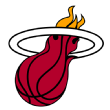 Miami Heat
Miami Heat
The Jimmy Butler trade has positioned Miami below the second apron next season. Including the partially guaranteed contracts of Terry Rozier, Duncan Robinson and Golden State’s first-round pick in June’s draft, the Heat are $11 million below the first apron and $23 million below the second.
Miami has its own first-round pick in 2026, 2028, 2029, 2030, 2031 and 2032. Because teams are not allowed to trade firsts in back-to-back seasons, Miami can send out 2030, 2032 and the Warriors’ pick in June. The Heat have two second-rounders available to trade.
Free agents: Davion Mitchell, Alec Burks, Keshad Johnson (Team)
Rookie scale contracts: Nikola Jovic ($4.4 million, RFA 2026), Kel’el Ware ($4.4 million, RFA 2028), Jaime Jaquez Jr. ($3.9 million, RFA 2027)
Sizable contracts: Bam Adebayo ($37.1 million, UFA 2029), Tyler Herro ($31 million, UFA 2027), Andrew Wiggins ($28.2 million, Player 2026), Terry Rozier ($26.6 million, UFA 2026), Duncan Robinson ($19.9 million, UFA 2026), Kyle Anderson ($9.2 million, UFA 2027), Haywood Highsmith ($5.6 million, UFA 2026), Kevin Love ($4.1 million, UFA 2026). Note: Rozier and Robinson’s contracts are partially guaranteed.
Other contracts: Pelle Larsson ($1.9 million, Team 2026), Johnson ($1.9 million, Team 2025). Note: Larsson’s contract is partially guaranteed, while Johnson cannot be traded unless the team option is exercised.
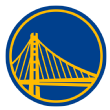 Golden State Warriors
Golden State Warriors
The addition of Butler has Golden State $17.5 million below the luxury tax before free agency begins. In the scenario where Golden State re-signs Jonathan Kuminga, the Warriors would become a luxury tax team that would likely exceed the first apron. They are $25.5 million and $37.3 million below both aprons.
Even after surrendering their 2025 first-rounder in the Butler trade, Golden State still has four available to use in a trade: 2026, 2028, 2028 (if 1-20) and 2030. The Warriors are also allowed to swap firsts in every season and have two second-rounders available.
Free agents: Jonathan Kuminga, Gary Payton II, Kevon Looney, Braxton Key, Kevin Knox, Gui Santos (Team), Pat Spencer and Quinten Post (Team)
Off the board: Stephen Curry ($59.6 million, UFA 2027)
Rookie scale contracts: Brandin Podziemski ($3.7 million, RFA 2027)
Sizable contracts: Jimmy Butler ($59.6 million, UFA 2027), Draymond Green ($25.9 million, Player 2026), Moses Moody ($11.6 million, UFA 2028), Buddy Hield ($9.2 million, Player 2027),
Other contracts: Trayce Jackson-Davis ($2.2 million, Team 2026), Santos ($2.2 million, Team 2025), Post ($1.9 million, Team 2025). Note: Santos and Post cannot be traded unless the team option is exercised.
 LA Clippers
LA Clippers
The Clippers have the flexibility to give Harden a salary increase, use most of their non-tax midlevel exception and still remain below the luxury tax and aprons. Including Harden’s $36.3 million player option, LA is $17.3 million below the tax and $25.3 million beneath the first apron.
Including in June’s draft, the Clippers have three first-rounders (2030 and 2032) available to put in a trade. They are allowed to swap firsts in 2030, 2031 and 2032 with five second-rounders available to trade.
Free agents: James Harden (Player), Nicolas Batum (Player), Amir Coffey, Patty Mills and Ben Simmons
Rookie scale contracts: Kobe Brown ($2.7 million, RFA 2027)
Sizable contracts: Kawhi Leonard ($50 million, UFA 2027), Harden ($36.3 million, Player 2025), Norman Powell ($20.5 million, UFA 2026), Ivica Zubac ($18.1 million, UFA 2028), Bogdan Bogdanovic ($16 million, Team 2026), Derrick Jones Jr. ($10 million, UFA 2027), Kris Dunn ($5.2 million, UFA 2027), Batum ($4.9 million, Player 2026)
Other contracts: Drew Eubanks ($4.8 million, UFA 2026), Jordan Miller ($2.2 million, Team 2027) and Cam Christie ($2 million, Player 2027). Note: Eubanks and Miller’s contracts are non-guaranteed.

Risks outweigh the rewards
Bucks forward Bobby Portis made an astute observation as it relates to any team trading for Antetokounmpo.
“Just looking business-wise: You trade for him, obviously, he’s going to make, what, $58-$60 million,” Portis said last week on FanDuel TV’s Run It Back. “You’ve got to trade your whole team, right?”
For example, the Pacers’ strength, as displayed this postseason, has continued to be their depth. Trading for Antetokounmpo would all but eliminate that unless stars Tyrese Haliburton or Pascal Siakam are included. There is also the risk of Antetokounmpo leaving in the 2027 offseason when he potentially becomes a free agent.
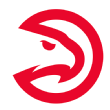 Atlanta Hawks
Atlanta Hawks
Atlanta enters the offseason right at the salary cap. They have enough flexibility below the luxury tax and first apron to be aggressive taking back salary in a trade.
The Hawks have no control over their first-round pick until 2028 but still possess draft equity in future seasons. Including the two first-rounders in June, Atlanta has nine through 2032, five that are tradable. Atlanta has six second-rounders.
Free agents: Clint Capela, Caris LeVert, Larry Nance Jr., Garrison Mathews, Dominic Barlow (Team)
Rookie scale contracts: Zaccharie Risacher ($13.2 million, RFA 2028), Dyson Daniels ($7.7 million, RFA 2026), Kobe Bufkin ($4.5 million, RFA 2027)
Sizable contracts: Trae Young ($46 million, Player 2026), Jalen Johnson ($30 million, UFA 2030), Terance Mann ($15.5 million, UFA 2028), Onyeka Okongwu ($15 million, UFA 2028), Georges Niang ($8.2 million, UFA 2026)
Other contracts: Vit Krejci ($2.3 million, Team 2027), Mouhamed Gueye ($2.2 million, Team 2026), Barlow ($2.3 million, Team 2025). Note: Krejic and Gueye’s contracts are not fully guaranteed, while Barlow cannot be traded unless the team option is exercised.
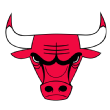 Chicago Bulls
Chicago Bulls
The Bulls are in a position to take back salary in a trade. Not including a new contract for Josh Giddey, Chicago is $46 million below the luxury tax.
The Bulls have their own first-round pick in the next seven seasons and are owed the Trail Blazers’ first-round pick that is top-14 protected over the next four seasons. Chicago also has six second-round picks available to trade.
Free agents: Jevon Carter (Player), Tre Jones, Talen Horton-Tucker and Josh Giddey
Rookie scale contracts: Matas Buzelis ($5.5 million, RFA 2028) and Dalen Terry ($5.4 million, RFA 2026)
Sizable contracts: Nikola Vucevic ($21.5 million, UFA 2026), Patrick Williams ($18 million, Player 2028), Zach Collins ($18.1 million, UFA 2026), Kevin Huerter ($18 million, UFA 2026), Coby White ($12.9 million, UFA 2026), Lonzo Ball ($10 million, Team 2026), Jalen Smith ($9 million, UFA 2027), Ayo Dosunmu ($7.5 million, UFA 2026), Carter ($6.8 million, Player 2025). Note: Carter cannot be traded unless he opts in to his contract
Other contracts: Julian Phillips ($2.2 million, Team 2026)
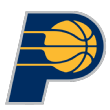 Indiana Pacers
Indiana Pacers
The Pacers could be a luxury tax team for the first time since 2005-06 if they retain center Myles Turner. Not including their first-round pick, Indiana is $23 million below the luxury tax and $30.4 million below the first apron.
The Pacers have their own first-rounder in six out of the next seven years. However, because they owe New Orleans a top-4-protected first-rounder in 2026 (it is also top-4 protected the following year), the maximum firsts available to trade is three (2028, 2030 and 2032). Indiana can trade the rights to the player selected in this year’s draft and have nine second-rounders available.
Free agents: Myles Turner, Thomas Bryant, James Johnson, Isaiah Jackson and Tony Bradley (Team)
Rookie scale contracts: Benedict Mathurin ($9.2 million, RFA 2026), Jarace Walker ($6.7 million, RFA 2027), Ben Sheppard ($2.8 million, RFA 2027)
Sizable contracts: Tyrese Haliburton ($45.6 million, UFA 2029), Pascal Siakam ($45.6 million, UFA 2028), Andrew Nembhard ($18.1 million, UFA 2028), Obi Toppin ($14 million, UFA 2028), Aaron Nesmith ($11 million, UFA 2027), TJ McConnell ($10.2 million, UFA 2029)
Other contracts: Johnny Furphy ($1.9 million, Team 2027) and Bradley ($2.9 million, Team 2025)
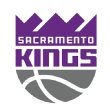 Sacramento Kings
Sacramento Kings
The Kings have two max players — Zach LaVine and Domantas Sabonis — under contract but have flexibility to take back money in a trade or use their $14.1 million exception in free agency. Sacramento, which has $163 million in salary committed to only eight players, is $24 million below the luxury tax and is in no danger of being in the first apron once its roster is filled out.
The Kings are allowed to trade a maximum of four first-rounders (2026, 2028, 2030 and 2032) in the next seven years and can swap first-rounders in each season. Sacramento has four second-rounders available.
Free agents: Trey Lyles, Jake LaRavia, Doug McDermott, Jae Crowder, Markelle Fultz, Terence Davis (Team), Keon Ellis (Team) and Isaac Jones (Team)
Rookie scale contracts: Keegan Murray ($11.1 million, RFA 2026) and Devin Carter ($4.9 million, RFA 2028)
Sizable contracts: Zach LaVine ($47.5 million, Player 2026), Domantas Sabonis ($43.6 million, UFA 2028), DeMar DeRozan ($24.6 million, UFA 2027), Malik Monk ($18.8 million, Player 2027) and Jonas Valanciunas ($10.4 million, UFA 2027)
Other contracts: Davis ($2.5 million, Team 2025), Ellis ($2.3 million, Team 2025) and Jones ($1.9 million, Team 2025). Note: The three players cannot be traded unless their options are exercised.

Limited in draft assets
The Nuggets, Lakers, Timberwolves, Knicks and Suns have a combined six first-round picks available to trade over the next seven years. Considering Milwaukee’s focus in any Giannis trade should be to accumulate draft assets, the four teams are likely not contenders when it comes to landing Antetokounmpo — unless an All-NBA player is traded to a third team for multiple draft picks.
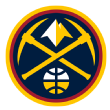 Denver Nuggets
Denver Nuggets
For a second straight season, Denver is projected to be over the first apron. As a result, they cannot use more than 100% of the traded player exception but are allowed to aggregate contracts if the post-transactional salary leaves them below the second apron. Denver is $4.7 million over the first apron and $7.1 million below the second apron.
The Nuggets have only their 2031 or 2032 first-round pick available to use in a trade or to swap.
Free agents: Dario Saric (Player), Russell Westbrook (Player), DeAndre Jordan and Vlatko Cancar
Off the board: Nikola Jokic ($55.2 million, Player 2027)
Rookie scale contracts: Christian Braun ($4.9 million, RFA 2026), Peyton Watson ($4.4 million, RFA 2026), DaRon Holmes II ($3.2 million, RFA 2028) and Julian Strawther ($2.7 million, RFA 2027)
Sizable contracts: Jamal Murray ($46.4 million, UFA 2029), Michael Porter Jr. ($38.3 million, UFA 2027), Aaron Gordon ($22.8 million, Player 2028) and Zeke Naji ($8.2 million, Player 2027)
Other contracts: Jalen Pickett ($2.2 million, Team 2026), Hunter Tyson ($2.2 million, Team 2026)
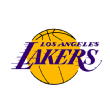 Los Angeles Lakers
Los Angeles Lakers
For a second straight offseason, LeBron James’ potential free agency plays a role in what the Lakers can add to their roster. James has a $52.6 million player option for next season. If he opts in or signs a new contract with a comparable starting salary, the Lakers will be $1.3 million over the luxury tax. Because the Lakers are well below the second apron, they have flexibility to aggregate contracts in a trade. L.A. has more than $60 million in expiring contracts.
As far as draft assets, the trade to acquire Luka Doncic left the Lakers with only their 2031 or 2032 first-round pick available to trade. The Lakers are allowed to swap firsts in 2026, 2028, 2030, 2031 and 2032 and have two second-rounders available.
Free agents: LeBron James (Player), Dorian Finney-Smith (Player), Jordan Goodwin (Team), Jaxson Hayes, Markieff Morris, Alex Len
Off the board: James (no trade clause)
Rookie scale contracts: Dalton Knecht ($4 million, RFA 2028)
Sizable contracts: Luka Doncic ($46 million, Player 2026), Rui Hachimura ($18.3 million, UFA 2026), Finney-Smith ($15.4 million, Player 2025), Austin Reaves ($13.9 million, Player 2026), Gabe Vincent ($11.5 million, UFA 2026), Maxi Kleber ($11 million, UFA 2026) and Jarred Vanderbilt (411.6 million, UFA 2028)
Other contracts: Shake Milton ($3 million, UFA 2027), Jordan Goodwin ($2.3 million, Team 2025), Bronny James ($1.9 million, Team 2027). Note: Goodwin cannot be traded unless the team option is exercised, while Milton’s contract is non-guaranteed.
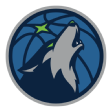 Minnesota Timberwolves
Minnesota Timberwolves
After spending the 2024-25 season as a second-apron team, Minnesota could have financial flexibility next season. While the Timberwolves are likely still going to be a tax-paying team (they are right at the threshold), the Timberwolves project to fall under the second apron. Including Naz Reid and Julius Randle’s player options along with the first-rounder from Detroit, the Timberwolves are $8.5 million below the apron.
The Timberwolves are left with the 2025 first from Detroit as their lone available draft asset to trade. They do have five seconds available, including the first pick in this year’s second round from Utah.
Free agents: Julius Randle (Player), Naz Reid (Player), Nickeil Alexander-Walker, Joe Ingles, Luka Garza (Team) and Josh Minott (Team)
Rookie scale contracts: Rob Dillingham ($6.6 million, RFA 2028), Terrence Shannon Jr. ($2.7 million, RFA 2028)
Sizable contracts: Anthony Edwards ($45.5 million, UFA 2029), Rudy Gobert ($35 million, Player 2027), Randle ($30.9 million, Player 2025), Jaden McDaniels ($24.9 million, UFA 2029), Reid ($15 million, Player 2025), Donte DiVincenzo ($11.9 million, UFA 2026) and Mike Conley ($10.7 million, UFA 2026). Note: Randle and Reid cannot be traded unless they opt in to their contract.
Other contracts: Jaylen Clark ($2.2 million, UFA 2026), Garza ($2.3 million, Team 2025), Leonard Miller ($2.2 million, Team 2026) and Minott ($2.2 million, Team 2025). Note: Garza and Minott cannot be traded because of their team option.
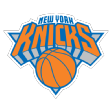 New York Knicks
New York Knicks
With 88% of their payroll tied up among five players (Jalen Brunson, Josh Hart, OG Anunoby, Mikal Bridges and Karl-Anthony Towns), the Knicks, who are leading the Celtics 2-1 in the conference semifinals, are limited in how they add to their roster this offseason. New York is $8.4 million over the luxury tax and right at the first apron with 10 players under contract.
When it comes to the draft, the top-8 protected first from Washington in 2026 is the lone tradable first New York has available. The Knicks are allowed to swap firsts in 2026, 2030 and 2032, and they have eight seconds available.
Free agents: PJ Tucker (Team), Ariel Hukporti (Team), Precious Achiuwa, Cameron Payne, Delon Wright, Landry Shamet
Off the board: Jalen Brunson ($34.9 million, Player 2028)
Rookie scale contracts: Pacome Dadiet ($2.8 million, RFA 2028)
Sizable contracts: Karl-Anthony Towns ($53.1 million, Player 2027), OG Anunoby ($39.6 million, Player 2028), Mikal Bridges ($24.9 million, UFA 2026), Josh Hard ($19.5 million, Team 2027), Mitchell Robinson ($12.9 million, UFA 2026), Deuce McBride ($4.3 million, UFA 2027)
Other contracts: Tyler Kolek ($2.1 million, Team 2027), Tucker ($3.5 million, Team 2025), Hukporti ($1.95 million, Team 2025). Note: Tucker and Hukporti cannot be traded unless their team option are exercised.
 Phoenix Suns
Phoenix Suns
Phoenix enters next season as a luxury tax team for a fourth straight year and it will be a projected $25 million over the second apron. The Suns could create significant savings (close to $100 million) and get closer to the second-apron threshold if they decline their $8.1 million team option for Vasilije Micic and waive Cody Martin’s $8.7 million salary. As it stands, Phoenix is not allowed to aggregate contracts or use more than 100% of the traded player exception.
Past trades and second-apron restrictions have positioned Phoenix with limited draft capital. Although the Suns have four future firsts in the next seven seasons, they’re allowed to trade either a 2028 (less favorable first of their own, New York, Washington) or 2029 first (least favorable of Cleveland, Minnesota — if picks Nos. 6 through 30 — and Utah). Their 2032 first-round pick is frozen because they exceeded the second apron this season. The Suns are allowed to trade the draft rights for the player selected with the Utah pick in this year’s draft. Phoenix has three seconds available.
Free agents: Vasilije Micic (Team), Bol Bol, Mason Plumlee, Damion Lee, Monte Morris and Tyus Jones
Off the board: Bradley Beal (no trade clause)
Rookie scale contracts: Ryan Dunn ($2.7 million, RFA 2028)
Sizable contracts: Kevin Durant ($54.7 million, UFA 2026), Devin Booker ($53.1 million, UFA 2028), Grayson Allen ($16.9 million, Player 2027), Royce O’Neale ($10.1 million, UFA 2028)
Other contracts: Oso Ighodaro ($1.9 million, Team 2027), Cody Martin ($8.7 million, UFA 2027), Nick Richards ($5 million, UFA 2026)

Financially restricted
Apron rules have all but eliminated Boston and Cleveland from trading for Antetokounmpo.
Both teams are deep into the apron and are not allowed to combine salaries or take back additional salary.
The only scenario that would work would be the Celtics flipping Jayson Tatum for Antetokounmpo. Both players have the identical salary next season.
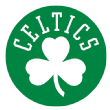 Boston Celtics
Boston Celtics
Boston, down 2-1 against the New York Knicks in the conference semifinals, are a second apron team for a second consecutive season. The first year of the Tatum and Derrick White contract extensions have Boston $23 million over the cap. The Celtics are not allowed to aggregate contracts and use more than 100% of the traded player exception.
Looking ahead to the draft, the Celtics have five of their own first-round picks in the next seven years. However, because their 2032 first is frozen and they owe Portland or Washington a first in 2028, the maximum firsts they can trade is one (2026 or 2027). Boston is allowed to trade the rights to the player selected in this year’s draft also. The Celtics can swap firsts in 2026, 2027, 2030 and 2031. Boston also has six seconds available.
Free agents: Al Horford, Luke Kornet, Torrey Craig, JD Davison (Team)
Off the board: Jayson Tatum ($54.1 million, UFA 2030)
Rookie scale contracts: Baylor Schierman ($2.6 million, RFA 2028)
Sizable contracts: Jaylen Brown ($53.1 million, UFA 2029), Jrue Holiday ($32.4 million, Player 2027), Kristaps Porzingis ($30.7 million, UFA 2026), Derrick White ($28.1 million, UFA 2029), Sam Hauser ($10 million, UFA 2029) and Payton Pritchard ($7.2 million, UFA 2028)
Other contracts: Xavier Tillman ($2.5 million, UFA 2026), Davison ($2.3 million, Team 2025), Jordan Walsh ($2.2 million, Team 2026), Neemias Queta ($2.3 million, Team 2026). Note: Walsh and Queta’s contracts are non-guaranteed.
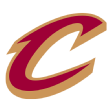 Cleveland Cavaliers
Cleveland Cavaliers
The Cavaliers, down 3-1 to the Indiana Pacers in the conference semifinals, project to be over the second apron in 2025-26 — the Cavs are $12.9 million above the second apron threshold. As a result, Cleveland is not allowed to aggregate contracts and use more than 100% of the traded player exception.
The Cavaliers are in a unique position because their 2033 first will likely get frozen after the 2025-26 season concludes. Due to the second apron penalty, this season could be the last chance in which Cleveland could move its 2032 first-rounder. The Cavs’ 2031 or 2032 first (but not both) are the only picks allowed to be traded. They have six seconds available.
Free agents: Ty Jerome, Sam Merrill, Javonte Green, Tristan Thompson and Chuma Okeke (Team)
Rookie scale contracts: Jaylon Tyson ($3.5 million, RFA 2026)
Sizable contracts: Donovan Mitchell ($46.4 million, Player 2027), Darius Garland ($39.5 million, UFA 2028), Evan Mobley ($46.4 million, UFA 2030), De’Andre Hunter ($23.3 million, UFA 2027), Jarrett Allen ($20 million, UFA 2029), Max Strus ($15.9 million, UFA 2027), Isaac Okoro ($11 million, UFA 2027)
Other contracts: Dean Wade ($6.6 million, UFA 2026), Okeke ($2.5 million, Team 2026), Craig Porter Jr. ($2.2 million, Team 2026). Note: Wade’s contract is partially guaranteed, while Porter Jr. has no salary protection.
Privacy Policy
Your US State Privacy Rights
Children’s Online Privacy Policy
Interest-Based Ads
About Nielsen Measurement
Do Not Sell or Share My Personal Information
Contact Us
Disney Ad Sales Site
Work for ESPN
CorrectionsESPN BET Sportsbook is owned and operated by PENN Entertainment, Inc. and its subsidiaries (‘PENN’). ESPN BET is available in states where PENN is licensed to offer sports wagering. Must be 21+ to wager. If you or someone you know has a gambling problem and wants help, call 1-800-GAMBLER.
Copyright: © 2025 ESPN Enterprises, Inc. All rights reserved.
Biggest questions of the 2025 NBA playoffs’ second round
None of the higher-seeded teams in the conference semifinals was able to capture a win in Game 1. Since then, the Boston Celtics and Minnesota Timberwolves have bounced back.
But the pressure is on, and with injuries to stars such as Stephen Curry and Karl-Anthony Towns there’s no telling which direction these series will take going forward.
After a Round 2 start full of surprises and back-and-forth series, our NBA insiders break down the biggest takeaways, players under pressure and what to watch as teams try to break through to the conference finals
(3) New York Knicks vs. (2) Boston Celtics
Who is under the most pressure for Monday’s vital Game 4?
I know what you’re supposed to say. It’s Jayson Tatum and his lightning-rod game of long jumpers and the occasional occurrences of avoiding contact. Or Jaylen Brown, whose shooting in the series has been only marginally better than Tatum’s poor percentages. (Brown is a woeful 5-of-23 on 3-pointers.) But the reality is the Celtics, for all their outside bricklaying, still have five guys averaging in double figures and an established track record as a wrecking ball.
The Knicks really could use a signature game from All-Star guard Jalen Brunson on Monday night. His approval rating in New York is sky-high, and rightly so, because his clutch performances are legendary. But take a step back, and the uncomfortable truth is that Brunson is getting smothered by the Celtics’ rotation of defenders, especially Derrick White and Jrue Holiday. Brunson is shooting just 38% in the series. And Boston is keeping him off the line; Brunson has just 18 trips in the three games, which is 33% less than he averaged against the Detroit Pistons in the first round. The Knicks are averaging just 95 points in regulation and shooting a lowly 42% in the series. Plus, Karl-Anthony Towns is now dealing with a left hand injury, and the Celtics are mor
(4) Denver Nuggets vs. (1) Oklahoma City Thunder
2025 NBA Playoffs
 From the play-in tournament to the NBA Finals, ESPN has you covered throughout the postseason.
From the play-in tournament to the NBA Finals, ESPN has you covered throughout the postseason.
Nikola Jokic rediscovers his shooting touch in one of the next two games. The three-time MVP is in an unprecedented funk, shooting under 40% from the floor in three consecutive games with at least 15 attempts for the first time in his career (regular season or playoffs), according to ESPN Research. Jokic, one of the most efficient superstars in NBA history, shot 33.3% during that three-game stretch, and he has more turnovers than assists in the series. Oklahoma City’s top-ranked defense deserves a lot of credit for making Jokic’s job difficult, and it will continue to apply the pressure as this series rolls on. — Tim MacMahon
(7) Golden State Warriors vs. (6) Minnesota Timberwolves
What is the Wolves’ biggest weakness, and how do the Warriors exploit that without Stephen Curry?
As one of four teams in the league to rank in the top 10 in both offense and defense during the regular season, the Timberwolves don’t have many major vulnerabilities. And Minnesota’s 23-6 record since the calendar turned to March only reinforces that. However, the Wolves haven’t always protected the basketball the way a team that should be totally locked into the value of every possession would be expected to. Even though Minnesota is up 2-1 on Golden State, the Wolves have committed more turnovers than the Warriors in two out of the three games (including Game 3, in which they committed 21 to the Warriors’ 15). Despite winning the turnover battle, Golden State scored only 13 points off the Wolves’ miscues in Game 3, while the Wolves scored 16 points off the Warriors’. If the Warriors can continue to use Draymond Green, Jimmy Butler, Brandin Podziemski, Gary Payton II and Jonathan Kuminga to harass the Wolves’ ball handlers and get a little more organized in their transition game when they do force a Minnesota blunder, Golden State might be able to steal a win to extend the series and give Curry a chance to heal his left hamstring for a Game 6 return. — Dave McMenamin
(4) Indiana Pacers vs. (1) Cleveland Cavaliers
The Cavs can bounce back in this series if they ____
Rediscover their historically great offense from the regular season. Cleveland had the No. 1 offensive rating in the NBA. But outside of Donovan Mitchell, it has been a struggle offensively all series, culminating in Game 4’s blowout loss that put the Cavs on the brink of elimination. In the first half of Sunday night’s contest, the Cavs scored 39 points while generating three assists and committing 14 turnovers. To make matters worse, Mitchell, who is averaging the most points in a playoff series by a Cavs player since LeBron James, did not play in the second half because of an ankle injury. — Jamal Collier
Bonus!
Breaking News from Shams Charania

Download the ESPN app and enable Shams Charania’s news alerts to receive push notifications for the latest updates first. Opt in by tapping the alerts bell in the top right corner. For more information, click here.
What has been the biggest surprise of the second round so far?
For the first time in NBA history, three teams have posted a point differential of plus-9 or better per game. Then those same squads — the Thunder, Cavaliers and Celtics — cruised in the first round, going a combined 12-1 against overmatched play-in teams. They all seemed on a collision course for the conference finals and/or NBA Finals.
So, even while acknowledging the role that injuries and shooting luck have played, it’s an immense surprise that this trio is collectively struggling in the second round. The big three from the regular season are a combined 4-7 against Denver, Indiana and New York in these playoffs. Those same big three might all still advance, as expected. But the unexpected parity has made for more entertaining games and a more competitive round overall. — Zach Kram
My NBA Finals picks are:
Even though both trailed 2-1 as of Sunday morning, I’m sticking with the Celtics and the Thunder. Boston’s Game 3 performance was a reminder of its matchup advantages against the Knicks when it makes 3s. The Celtics would surely be favored if they make the Eastern Conference finals. Out West, Minnesota is the safest bet on the board to reach the conference finals and also has matched up well with Oklahoma City this season. Still, the Thunder are back in a position of having home-court advantage throughout the playoffs, making them the favorites. — Kevin Pelton
